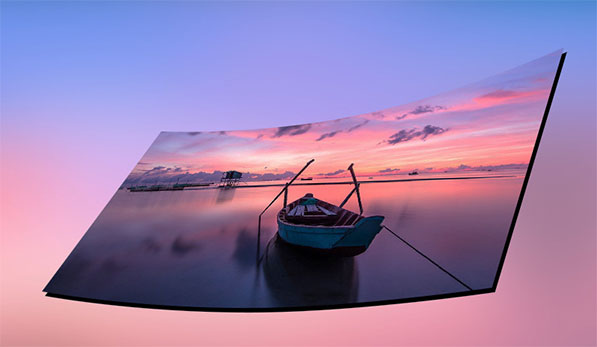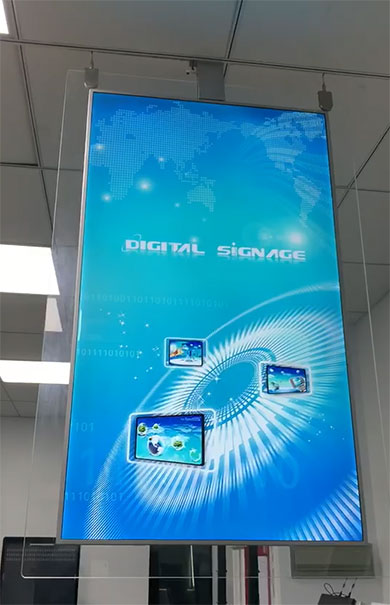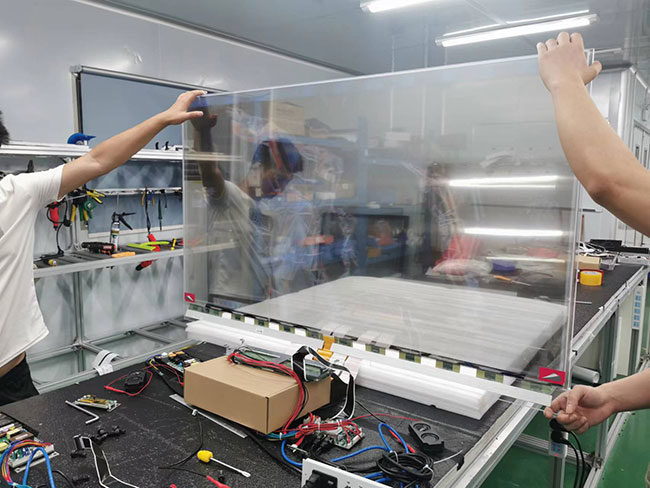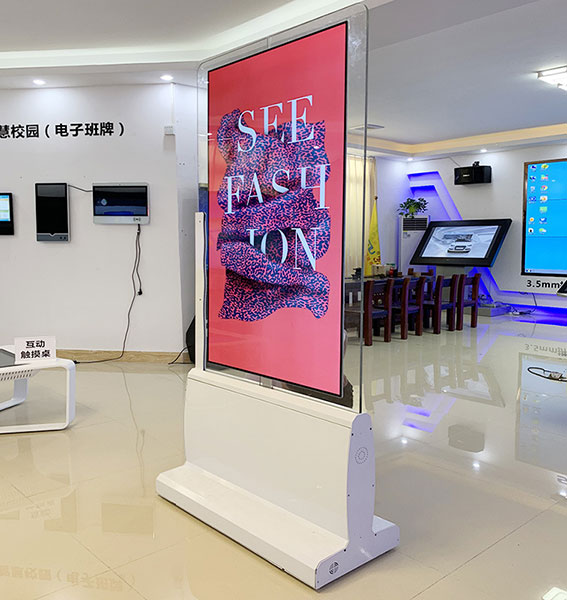Written By Mark Wang On 15th December 2022
OLED display can replace LCD and PDP in addition to the traditional display field, but also can belong to their own application areas:
3G communication field
OLED can meet the requirements of normal work in the sunlight and cold environment, and no perspective restrictions, can play dynamic images without trailing phenomenon, low power consumption and other advantages. Therefore, OLED will definitely become the mainstream of 3G communication terminal display.
Military and special purposes
OLED is all solid state, no true cavity, no liquid components, good shock resistance, in other displays can not work in harsh environments, such as with huge acceleration, high cold or strong vibration environment, so it can be used in combat vehicles, tanks, aircraft and other combat platform dashboard and all kinds of drivers, soldiers, technologists and doctors use the helmet display, but also can be used for aerospace displays, military mobile night and field displays, etc.
Soft display
The conductive glass substrate for a conductive soft material substrate, you can prepare a soft display. Can be used as clothing decorations, crafts, signs and displays, can also be used to make rolled up to carry and have unlimited data transmission function of electronic newspapers and television sets.

OLED from the external quantum efficiency of less than 0.1%, the life of only a few minutes to start the development, has developed external quantum efficiency of more than 5%, the operating life of more than tens of thousands of hours, has initially been able to meet the requirements of industrial production. At present, nearly one hundred research institutions and companies around the world have been engaged in the research and development and industrialization of OLED, including many well-known large companies, such as Sony, Philips, Pioneer, NEC, Kodak, Sanyo, Samsung, LG, Intel, Motorola and other companies. In the initial stage of OLED research and development, Europe and the United States are more advanced. The core patents of small molecule OLEDs are mainly in the hands of Kodak, and the core patents of polymer OLEDs are mainly in the hands of CDT and Uniax. Other companies who want to engage in the production of OLEDs generally need to get the patent license from Kodak or CDT. As Kodak and CDT have been more active in licensing in the past two years, the number of companies in the world ready to develop and produce OLEDs is rapidly increasing.

OLED is a display device that converts electrical energy into light energy, so what are its advantages?
1.Active light-emitting, wide viewing angle: no viewing angle restrictions, viewing angle greater than 170 °, no backlight.
2.High resolution: Active matrix OLEDs provide solutions for high information content of video and graphics.
3.High brightness: Because polarizers and diffusers are not required, OLEDs are brighter and more contrasting than LCDs, providing clear images even in bright environments.
4.High luminous efficiency: high luminous efficiency allows for high brightness and low power consumption.
5.Fast response time: 10 microseconds, 100-1000 times faster than 15-18 ms LCDs, which improves image refresh speed and works well when displaying fast moving images.
6.Wide operating temperature range: generally -40-75 ℃, temperature characteristics are better, light-emitting performance is not affected by temperature, can work at -40 ℃ low temperature, can meet the use of many low-temperature conditions, and liquid crystal materials at lower temperatures, will not be deflected, so that the LCD can not work.
7.Low drive voltage and power loss: its drive voltage is generally 2-10 volts and power consumption is 350-400 mW at a brightness of 150 CD/m2.
8.Ultra-light and ultra-thin: 1/3 the volume of LCD, half the thickness of LCD, and 20-50% lighter than LCD.
9.Good mechanical properties of organic materials, easy to process into various shapes; resin can be used as a substrate to prepare foldable displays, which can be placed on clothes and other soft objects to carry around.

OLED although after decades of research and development has made great achievements, but in the road to mass practicality there are still the following problems.
A-Life and stability: improve the luminous efficiency and device life, increase its stability, so that the device is really put into use is the main direction of future development.
B-Full-spectrum luminescence: Although the red and blue light-emitting materials continue to be reported, but compared with the more mature yellow and green light materials, there is still a large shortfall, the realization of full-color display still needs work.
C-Luminous mechanism: further understanding of the device's luminous mechanism, a reasonable explanation of the aging phenomenon of the device, red shift phenomenon, etc., luminous spectrum and luminous efficiency with the environment, the relationship between temperature will become the focus of research.

For the above problem points, CY Digital Signage give some solutions for reference.
A-Develop better organic light-emitting materials, optimize the structure of the device, and improve the luminous efficiency, lifetime, and energy consumption of the product. In the process of mass production and industrialization of OLED displays, the life of OLED devices must be extended, so that the stability of OLED device performance is further enhanced.
B-Optimize the structure of the drive circuit. Pixel circuit with AC drive mode is conducive to extending the service life of OLEDs.
C-Research and development of large-screen display technology. Low power consumption, wide viewing angle and other characteristics make OLED display technology is most suitable for large-screen display. Low power consumption, can be integrated into the peripheral drive circuit is conducive to display work stability.
D-Further reduce the cost of the display. At present, OLED display technology is still in the laboratory research and development stage, far from the ability to industrial mass production; reduce production costs is a necessary requirement for the industrialization of OLED displays.
OLED performance depends mainly on the number and balance of holes and electrons injected into the light-emitting layer. The general device uses ITO as the hole injection layer, but the surface treated ITO has a relatively low work function, and the holes need to overcome the higher energy to enter the organic layer, in addition ITO will dissolve into the organic layer, degrading the organic layer. Therefore, adding a hole injection layer between ITO and organic layer, such as NiO, PANI:PSS, etc., can overcome the above disadvantages.
 Mark Wang
Mark Wang
Mark Wang is the Chief Technology Officer at CY Digital Signage. And he has over 15 years experiences in digital signage solutions.
